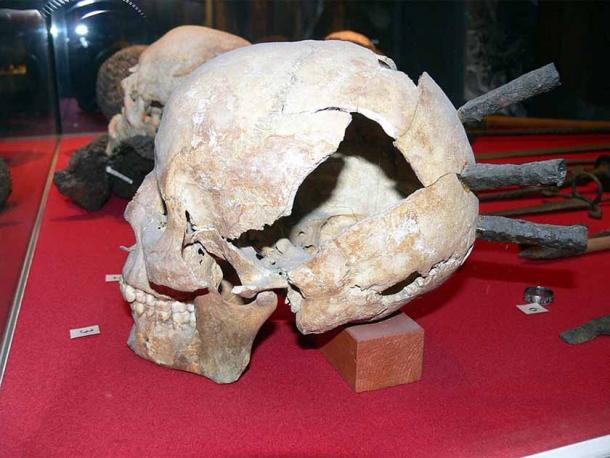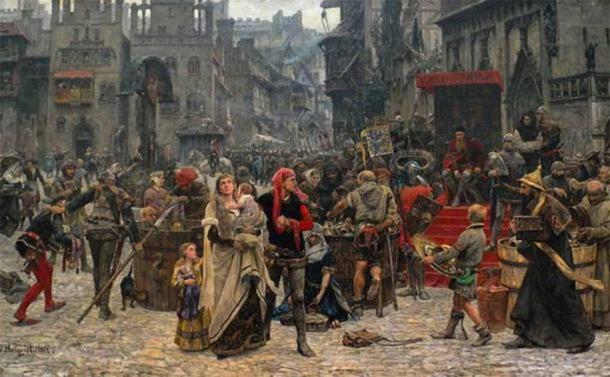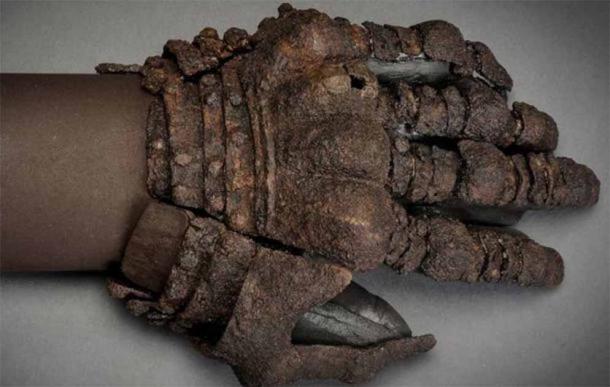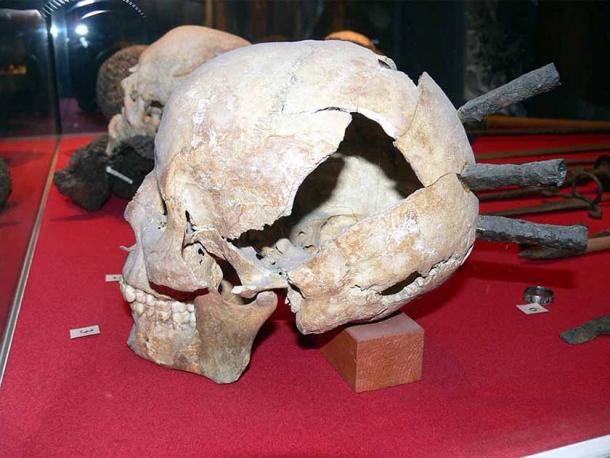The Battle of Visby, a brutal medieval conflict that took place near the town of Visby on the Swedish island of Gotland, witnessed a fierce clash between the indigenous people of Gotland and the Danish invaders. Ultimately, it was the Danes who emerged victorious from this harrowing encounter.
Setting the Stage for the Battle of Visby: A King’s Avarice and the Fate of a Trading City
During the medieval era, the island of Gotland held a crucial position in the intricate network of trade routes connecting Europe and Russia. Situated in the Baltic Sea off the Swedish coast, Gotland’s strategic location transformed the city of Visby into a bustling center of commerce and cultural interchange.
In the late 13th century, Visby joined the prestigious Hanseatic League, an alliance of merchant towns spanning Northwestern and Central Europe. Beyond facilitating trade, the Hanseatic League served as a defensive and protective force, safeguarding the interests and security of its member cities.

However, as the influence of the Hanseatic League grew, it began to loom over certain rulers, unsettling them. One such ruler was Valdemar IV, the King of Denmark. Valdemar grew discontented with what he perceived as the league’s encroachment on his kingdom’s trade interests and coveted the wealth accumulated by its member towns.
By the mid-14th century, Visby, despite its continued affiliation with the Hanseatic League, experienced a decline as a prominent trading hub. Valdemar, keenly aware of this situation, directed his ambitions towards capturing the city. Moreover, rumors circulated that the people of Visby openly mocked the Danish king through derisive drinking songs, further fueling his personal animosity towards them.
Valdemar IV’s decision to attack Visby thus arose from a combination of economic rivalry, territorial aspirations, and personal grievances. This multifaceted backdrop laid the foundation for the violent clash that would come to be known as the Battle of Visby in 1361, ultimately reshaping the destiny of this once-thriving medieval trading city.
The Danish Onslaught: The Battle of Visby and its Consequences
In the summer of 1361, a formidable Danish army embarked on a journey to conquer Gotland. The people of Visby had received advance warning about the impending invasion and made preparations to defend their homeland. In late July of that year, Valdemar’s army landed on the western coast of Gotland. Comprising approximately 2,000 to 2,500 soldiers, the Danish force consisted primarily of seasoned Danish and German mercenaries. On the other side, the defending Gotlanders numbered around 2,000, but they were mostly untrained militiamen with little or no experience in battle.

The initial attempt by the Gotlanders to impede the Danish advance took place at Mästerby, located in the central part of the island. However, their resistance proved futile as they were swiftly overpowered by the Danish forces. Undeterred, the victorious Danes pressed on toward Visby.
The Battle of Visby unfolded just outside the town’s protective walls. Although the militiamen fought valiantly, desperately defending their lives, they were simply outmatched by the professional Danish army. Consequently, the majority of the defenders met their demise, and Visby ultimately surrendered to Valdemar’s forces.
The Danish invasion and the Battle of Visby marked a turning point in the fate of the town and its inhabitants, leaving a lasting impact on the history of Gotland and the memory of the valiant but outnumbered defenders.
Excavations of the Battle of Visby’s Mass Graves

Those who fell during the battle were buried in several mass graves and were left in peace until the 20th century. Between 1905 and 1928, the mass graves were discovered and subsequently excavated. More than 1,100 human remains were unearthed, providing archaeologists with a plethora of information about the battle. The types of weapons used during the Battle of Visby could be determined based on the injuries left on these remains. About 450 of these wounds, for instance, were inflicted by cutting weapons, such as swords and axes, whilst wounds inflicted by piercing weapons, such as spears and arrows, numbered around 120.
Insights from the Bones: The Harsh Reality of Medieval Warfare

By studying the bones left behind in the wake of the Battle of Visby, it was also found that at least a third of the defenders of Visby were the elderly, children, or the crippled, an indication that the situation was very dire indeed for the townsfolk. The remarkably well-preserved state of these remains offers invaluable insights into the lives, struggles, and sacrifices of those who fought valiantly in the Battle of Visby. They stand as a lasting legacy, allowing us to connect with the past and pay tribute to these fallen warriors who defended their homeland with unwavering valor.
Preserved Warriors: Unveiling the Fallen Soldiers of the Battle of Visby
In the aftermath of the Battle of Visby, it is believed that the fallen soldiers were swiftly laid to rest, preserving their mortal remains alongside the very equipment they wielded during the fateful clash. This included their armor and weapons, providing a remarkable and unparalleled archaeological discovery.
While many of the defenders were ill-prepared for the battle, there exist notable examples of chainmail shirts, coifs, gauntlets, and an array of weaponry. These astonishing artifacts, intertwined with the human remains, now find their place of honor in the Gotland Museum, serving as an enduring testament to the courageous defenders of Visby.

